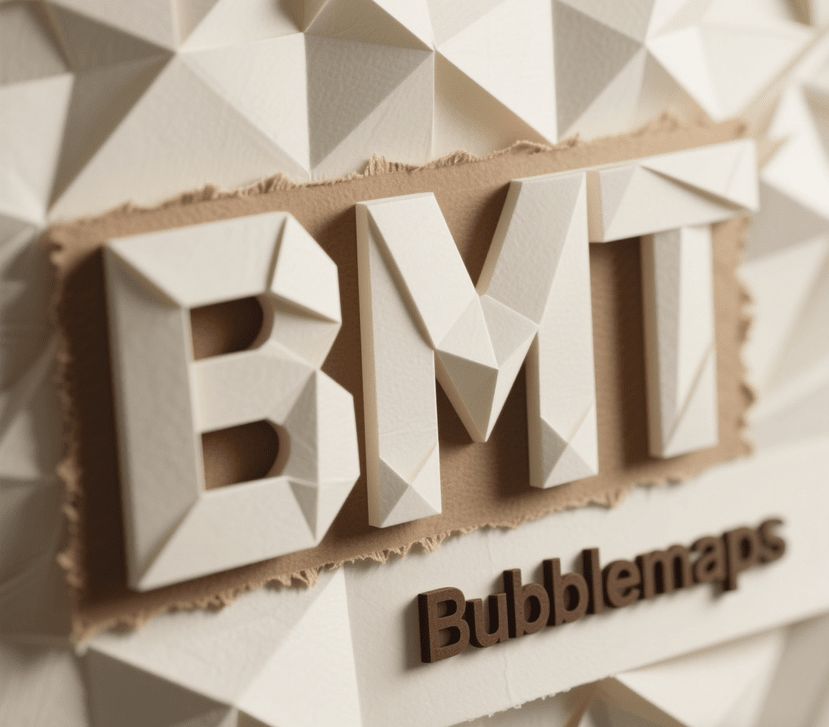The first time I stared blankly at on-chain data, I always felt that those hash values and transaction records looked like a bunch of tangled digital yarn—knowing that hidden within are the flows of tokens and the movements of big holders, yet I couldn't make sense of them. It wasn't until I discovered Bubblemaps that I suddenly understood: blockchain data can also be 'blown' into structured shapes like 'bubblegum', making the connections and clusters hidden underneath clear as day 🔍
It's not just about drawing; it's about 'untangling' the data 🧩
The core of Bubblemaps is its 'on-chain intelligent visualization engine'. You can imagine the raw data of blockchain as a pile of unnumbered puzzle pieces: Who received the tokens? Which addresses are quietly clustering together? How does the funding circulate between different protocols? These 'hidden plots' can be pieced together using dynamic bubbles and connecting lines—
• Looking at token distribution? It will blow up holding addresses into bubbles of varying sizes according to their proportions, easily distinguishing who are whales and who are retail investors.
• Finding cluster relationships? Related addresses will be encircled into a 'bubble family', even if they change N identities for transfers, they can't escape this layer of perspective.
• Digging for hidden connections? The dark lines of funds moving from Protocol A to Wallet B and then to Exchange C become clear arrows, like putting a 'tracker' on the data.
Is this just drawing? Clearly, it’s a 'CT scan' of on-chain data, turning the hidden networks and fund flows behind the numbers into a visual story that even beginners can understand.
$BMT token: the energy block that hands tools to 'data detectives' 🔋
If Bubblemaps' visualization engine is a 'microscope', then the $BMT token is the 'battery' + 'toolbox' that makes this microscope run smoother:
• It powers Intel Desk (the community-driven investigation layer)—imagine a group of on-chain detectives teaming up to solve cases; $BMT is their 'search warrant', allowing holders to initiate investigations, verify clues, and expose suspicious fund movements.
• Need advanced visualization features during transactions? Require precise data reports during compliance checks? Even making decisions with data in InfoFi (Information Finance) scenarios? $BMT acts like a 'pass token', unlocking these key functions, allowing data to not only be understandable but also usable.
The best part is that it has transformed 'data insights' from the patent of a few experts into something the community can participate in together—previously, coding was required to check on-chain data, but now ordinary people can use tools empowered by $BMT to become 'on-chain Sherlock Holmes'.
My genuine feeling: this is the 'gentleness' that data should have 💡
The first time I used Bubblemaps to check the flow of a popular token, I stared at the screen for a long time—what I couldn't clarify in hours of browsing the blockchain explorer, the transfer paths of big holders, appeared in its bubble chart like a glowing river, from the exchange to the wallet, and then to the staking pool, with each node clearly marked.
This suddenly makes me feel that the 'transparency' of blockchain has always been said to be too technical and cold, but Bubblemaps wraps this transparency in a layer of 'gentle clothing' with bubbles and lines. It doesn't simplify the data, but makes complex data 'tangible'—like translating a book full of formulas into an illustrated story.
What type of information do you find most frustrating when checking on-chain data? If Bubblemaps could help you visualize it, what would you most want to see clearly? Tell me your 'data pain points' in the comments section~
#Bubblemaps $BMT @Bubblemaps.io

